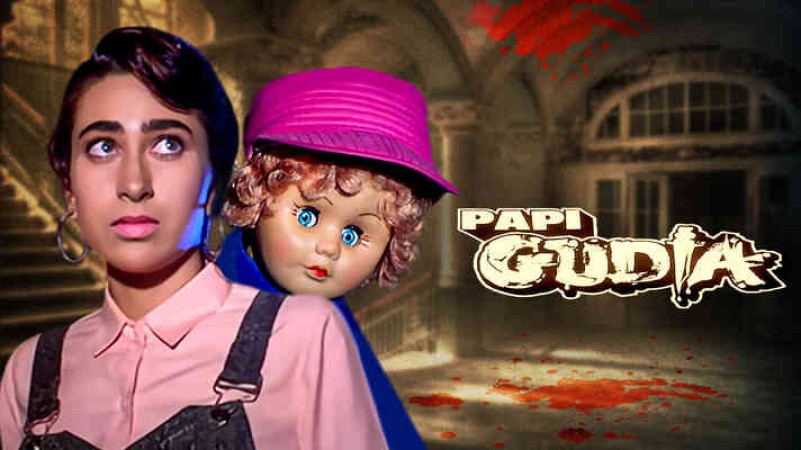
Remakes are a common concept in the film industry. Filmmakers frequently take cues from popular narratives and use them as inspiration to retell beloved tales in their own unique ways. A notable example that has caused agitation in the Bollywood film industry is the film "Papi Gudia," which many consider to be an unofficial re-imagining of the classic Hollywood picture "Child's Play." The parallels and contrasts between these two films will be discussed in this piece, along with the contentious claim that "Papi Gudia" is a Hindi version of "Child's Play."
Prior to delving into the comparison between the two films, let's talk about "Child's Play." "Child's Play" was helmed by Tom Holland and premiered in 1988, quickly becoming a horror classic. The main character of the movie is Chucky, a possessed doll whose soul is transferred from a serial killer into it, turning it into a homicidal maniac. Chucky has grown to be a legendary figure in the horror genre, and "Child's Play" is praised for its masterful blending of dark humour and terror.
Lawrence D'Souza's 1996 Bollywood film "Papi Gudia" was released. The main character of the film is a doll who, like Chucky, turns into a wicked force. Many people believe that "Papi Gudia" is an unofficial adaptation of "Child's Play" because of the play's striking similarities to the latter.
The idea of the evil doll is the most overt similarity between the two movies. A seemingly innocent doll in both films is turned into a malevolent force by an evil spirit that has taken possession of it. In "Papi Gudia," it's the title doll, Papi, but in "Child's Play," it's Chucky, a Good Guy doll. One theme that unites the two films is the use of dolls as evil vessels.
Charles Lee Ray, a renowned serial killer, is the evil spirit in "Child's Play," transferring his soul into a Good Guy doll. Similar to this, in "Papi Gudia," the evil spirit is represented by Naagraj, a criminal who owns the doll Papi. The idea that evil spirits can take solace in inanimate objects and carry on with their nefarious deeds is explored in both films.
The violent rampage that the possessed dolls go on in the two films is another similarity. Chucky and Papi both go on murderous rampages, taking aim at people who obstruct their path or threaten their survival. These horrific and violent scenes add a great deal to the suspense and terror of the films and are essential to their plots.
The main characters of "Papi Gudia" and "Child's Play" are engaged in a valiant struggle with the evil doll. Initially owned by Andy Barclay (in "Child's Play") and Karishma (in "Papi Gudia"), the dolls are first noticed by the children as sinister objects. They have to persuade adults who are not very receptive that the dolls are the cause of the murders. A common theme in both films is the struggle to be believed.
The protagonists and the possessed doll square off in the end of both movies. The children are in a fight for their lives with the evil dolls, and the encounter is full of suspense and tension. The thrilling conclusion plays a pivotal role in the stories of both films.
Although "Papi Gudia" and "Child's Play" have a lot in common, they also differ significantly from one another. These variations lend credence to the notion that "Papi Gudia" is an unofficial remake in a number of ways.
The cultural adaptation of "Papi Gudia" is one argument in favour of it not being a straight replica of "Child's Play". "Papi Gudia" includes aspects of Indian culture and beliefs about possessed dolls that are not present in "Child's Play." The horror and suspense of the story are given a distinct taste by the Indian backdrop.
Successful Western films have long been adapted by Bollywood for the Indian market. But in order to differentiate the adaptation from the original, the storyline and setting are frequently significantly altered. Although "Child's Play" may have served as inspiration for "Papi Gudia," the movie's creators aimed to produce a distinctive Indian horror film.
Because "Papi Gudia" does not have any official rights or licencing from the creators of "Child's Play," it is regarded as an unofficial remake for one reason. It is difficult to categorically classify "Papi Gudia" as a remake or a unique creation in the absence of official legal confirmation or disputes in this regard.
Since "Papi Gudia" and "Child's Play" have a lot in common but also differ in terms of cultural background and adaptation, there will probably always be disagreement over whether or not "Papi Gudia" is an unofficial remake of "Child's Play." Whatever its beginnings, Bollywood's horror film "Papi Gudia" has made a lasting impression on the Indian public and grown to be a noteworthy work. "Papi Gudia" offers a blend of suspense, horror, and cultural elements that make it stand out in its own right, regardless of whether it was influenced by "Child's Play" or not. The two films' similarities demonstrate how popular the idea of the evil doll—which creeps and fascinates people all over the world—is.
Bollywood's Leading Lady Karishma Kapoor's Spectacular Comeback in 'Dangerous Ishq'